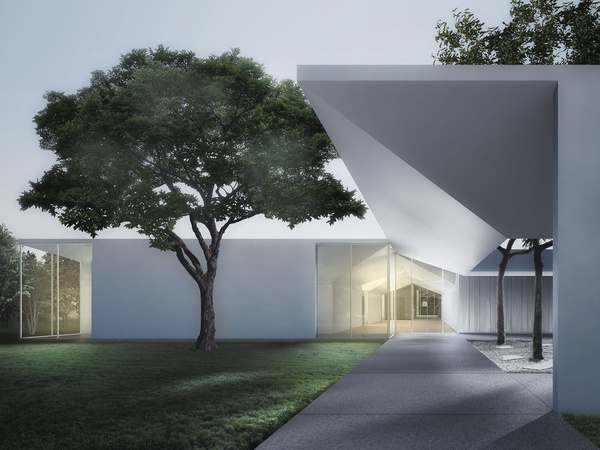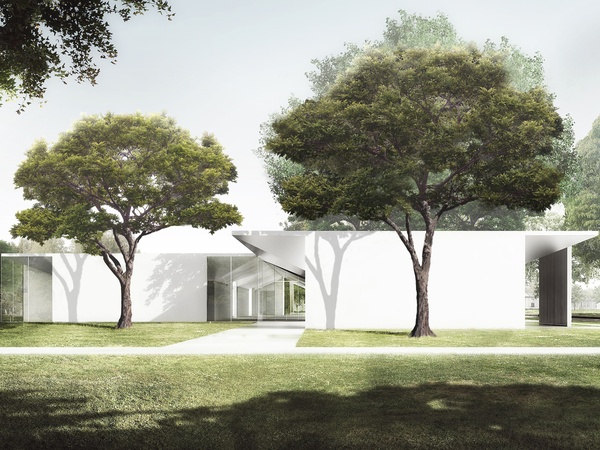In Houston, plans are being finalized for the first freestanding American building built to house and conserve modern and contemporary drawings.
The Menil Drawing Institute, named for Dominique de Menil, legendary arts patron and collector, is being designed by Johnston Marklee and Menil officials.
The $40 million, 30,150-sf building will be located between the Cy Twombly gallery and Richmond Hall, both distinctive art buildings in their own right.
The MDI will be built around three open courtyards, and two of these will be entry points into the single-story building. The third courtyard will be at the center of a restricted area meant for research.
On one side of the Institute, there will be exhibition galleries, while administrative offices and the conservation laboratory will be on the other end. In the center of the building, there will be a "living room" space where visitors, administrators, and scholars can mingle, according to CultureMap Houston.
Indoor and outdoor spaces will be unified by a thin, flat roof that will seem to be floating in the air when viewed from one side, and the roof will seem to be pierced by the trees in some places, according to the architects at Johnston Marklee.
The MDI will only be 16 feet tall because the architects did not want to block views of surrounding 1920s bungalows or the main art buildings.
Johnston Marklee is also designing a new Energy House for utilities that will be just south of the Cy Twombly gallery. There will be a park between the MDI and Energy House.
The 30-acre enclave will also include a new restaurant, Bistro Menil, designed by Stern and Bucek Architects, and landscaping by Michael Van Valkenburgh Associates, Inc.
Construction is supposed to begin in 2015. A $110 million capital and endowment campaign is in progress. 
Related Stories
| Aug 11, 2010
Platinum Award: Reviving Oakland's Uptown Showstopper
The story of the Fox Oakland Theater is like that of so many movie palaces of the early 20th century. Built in 1928 based on a Middle Eastern-influenced design by architect Charles Peter Weeks and engineer William Peyton Day, the 3,400-seat cinema flourished until the mid-1960s, when the trend toward smaller multiplex theaters took its toll on the Fox Oakland.










